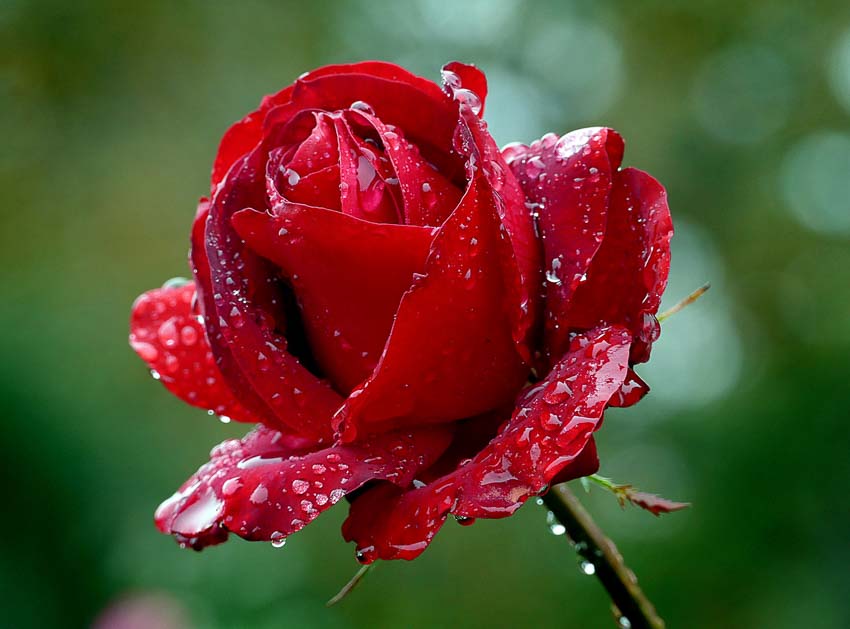Gardens delight all your senses, and while it’s easy to be captivated by the sights and sounds, the amazing smells draw you in and enchant you the most. Learn about the benefits of fragrant plants and discover seven plants that will transform your garden into a magical paradise.
The Importance of a Good Smelling Garden
A garden is a bouquet of aromas, with each smell evoking memories and creating an atmosphere of peace and relaxation. The scent of the grass, flowers, and soil in your garden provides a calming and invigorating sensory experience.
Creating a Relaxing Atmosphere
Humans have used the perfumed scents of flowers to reduce stress, encourage sleep, and fight disease for thousands of years. The science behind aromatherapy backs up what humans have known for millennia.
As scent molecules travel through your nose, they take a direct route to the brain’s limbic system . This is where smells, emotions, and memory link.

The sense of smell is the only one fully developed in the womb. Moreover, the part of your brain that processes odors is the same area that processes emotions and memory.
In fact, olfactory memory is so powerful that the scent of a familiar plant or flower can bring up memories.
Good-smelling plants like lavender and roses trigger a calming effect on the body and mind. Moreover, studies have found that the aromas of certain plants can reduce stress levels, heart rates, and blood pressure.
They can also improve your mood, reduce anxiety, and create a feeling of relaxation.
Attracting Pollinators
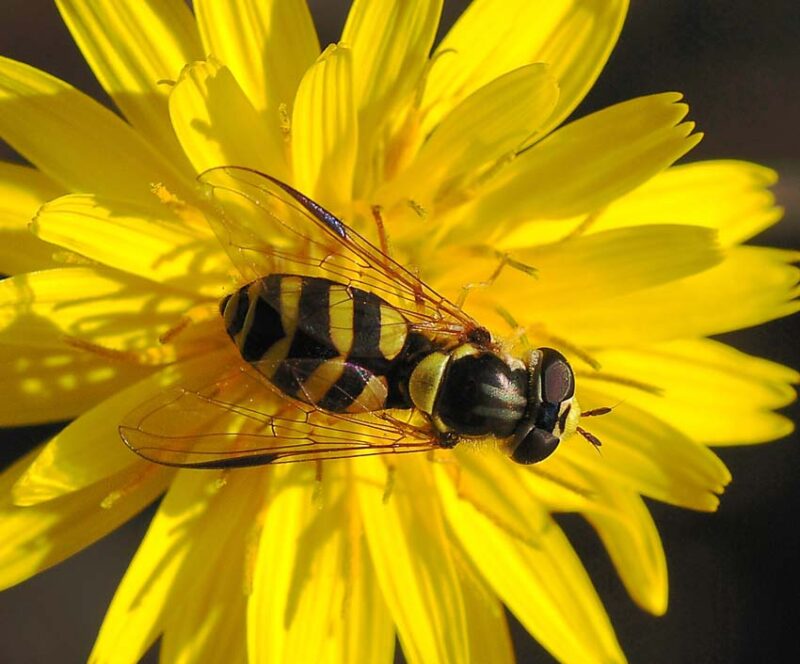
A sweet-smelling garden seems heavenly, but plants actually use their fragrant aromas to attract pollinators. The volatile compounds and essential oils in floral scents waft through the air and communicate with insects that nectar and pollen are available.
Once the flower’s fragrance is in the air, insects pick up the scent with olfactory receptors in their sense organs. The pheromones convert to electrical energy that stimulates the nervous system.
Inside the insect’s brain, odor-binding proteins interact with the chemical scent of the flower. This triggers a neural impulse and pushes the insect to pursue the flower.
Enhancing the Garden Aesthetic
Gardeners have always understood how flowers that invigorate our sense of smell enhance a beautiful landscape, and there is ample science to support it. Just as insects act when a chemical scent reaches their brain, humans are powerless over the scents of a fragrant garden.
No matter what type of garden aesthetic you choose, Mother Nature has designed fragrant outdoor plants to captivate and enthrall you. When something stimulates your sense of smell, the natural setting of a garden becomes a deeply satisfying experience.
Understanding the Types of Fragrant Plants
You have many options for adding fragrant plants to your garden. Choose between annuals, perennials, and woody shrubs to experience the heady scents of flowers in your backyard.
Annual Fragrant Plants
You plant annuals each spring and grow them for one season. Gardeners select most annuals for their showy blooms, but they grow several for their fragrance. Choose from popular aromatic annuals for your containers, trellises, and cut flower gardens.
Annuals include many bright-colored plants that smell good. Fragrant annual plants like petunias, flowering tobaccos (Nicotiana alata and Nicotiana sylvestris), and moonflowers (Ipomoea alba) are wonderful additions to any garden.
Perennial Fragrant Plants
Fragrant perennials are sure things, and they offer their bounty every year without replanting. From bulbs to herbaceous plants, there’s a fragrant perennial for every area of the yard.
Perennials make excellent ground covers, bedding plants, and border plants, and while summer is the best time for their showy blooms, there are flowering bulbs for a garden full of spring scents.
When it comes to perennials, you have many good choices for a fragrant garden aesthetic. Some of the best include tall garden phlox (Phlox paniculata), hyacinths (Hyacinthus orientalis), and Oriental lilies (Lilium species). Try the Valerian plant (Valeriana officinalis) for a sweet, vanilla scent in many perfumes.
Woody Fragrant Plants
Woody plants are perennials that produce hard stems, including trees and shrubs. Some of your garden’s most well-known fragrant plants fall into this category. Once planted, you can enjoy their wonderful fragrance for years. In some cases, they live more than a century.
Many of the woody fragrant plants are old-fashioned favorites that you might recognize from your grandmother’s garden. Enjoy the nostalgia evoked by the smells of woody plants like elderberry (Sambucus nigra), honeysuckle (Lonicera periclymenum), and Southern magnolia (Magnolia grandiflora).
7 Most Fragrant Plants for Your Garden
Every garden is complete with plants that smell good. They attract pollinators, invite people to linger, and add something special to your outdoor space. Here is a list of seven of your garden’s most fragrant outdoor plants.
Lavender: A Classic Aromatic Plant
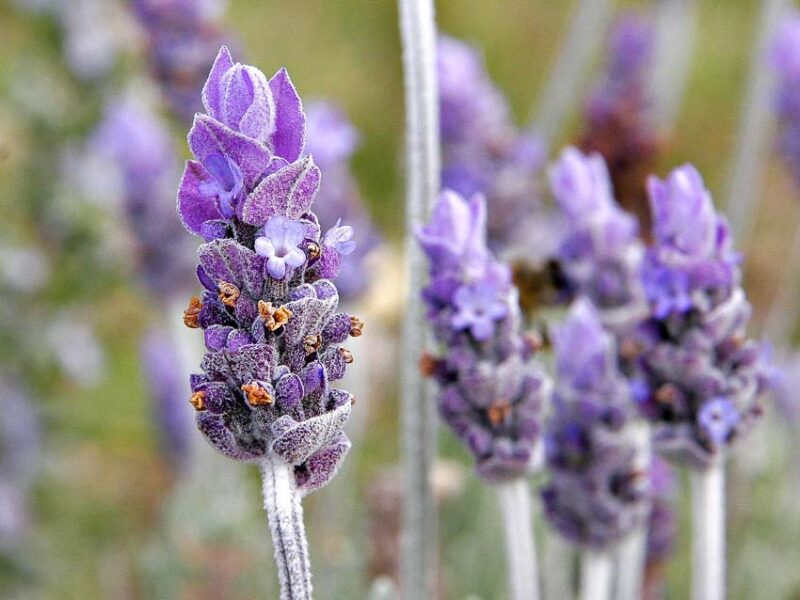
Often grown as an aromatic herb, lavender (Lavandula species) is a compact perennial shrub. It’s hardy in most climates and likes well-drained soil and full sun. Lavender tolerates drought well, and once established, it prefers neglect, making it an excellent choice for low-maintenance gardens.
English lavender (Lavandula angustifolia) and Portuguese lavender (L. latifolia) are the two most commonly grown species, but there are over 45 species with over 450 varieties cultivated.
If you want to try something new, venture into topiary with an English lavender plant. You can also use other types of lavender in topiary. They are best grown indoors in terra cotta pots and make thoughtful gifts.
Jasmine: An Exotic Fragrance
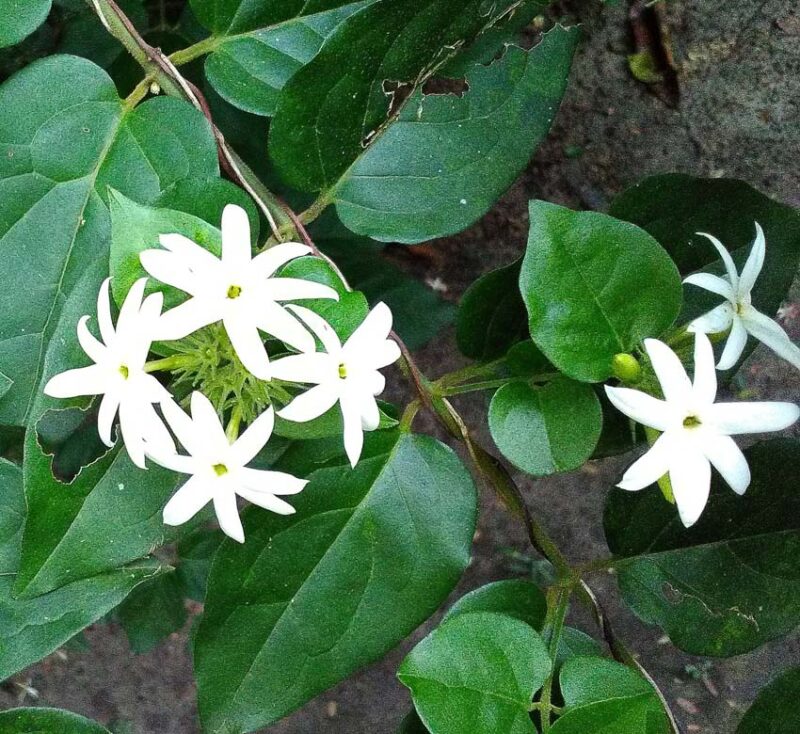
Jasmine is an attractive scent that some cultures use as a natural sedative. People also use it to reduce anxiety and alleviate stress, and the sweet, heady scent is a common fragrance that gardeners use in perfumes and massage oils.
Generally, jasmine is easy to grow, preferring full sun with moist, well-drained soil. Several varieties have different growing requirements, so check the requirements of the species you choose for the best results.
One of the longest-blooming fragrant plants, jasmine is a woody vine that grows best when supported by a trellis. Cut it back after it blooms, and fertilize it in the fall with manure. The most fragrant species is Common White Jasmine (Jasminum officinale).
Other fragrant jasmines include Arabian Jasmine (J. sambac) and Pink Jasmine (J. polyanthum). Choose a sheltered spot for Winter Jasmine (J. nudiflorum) to grow in northern climates to Zone 6.
Gardenia: A Southern Beauty
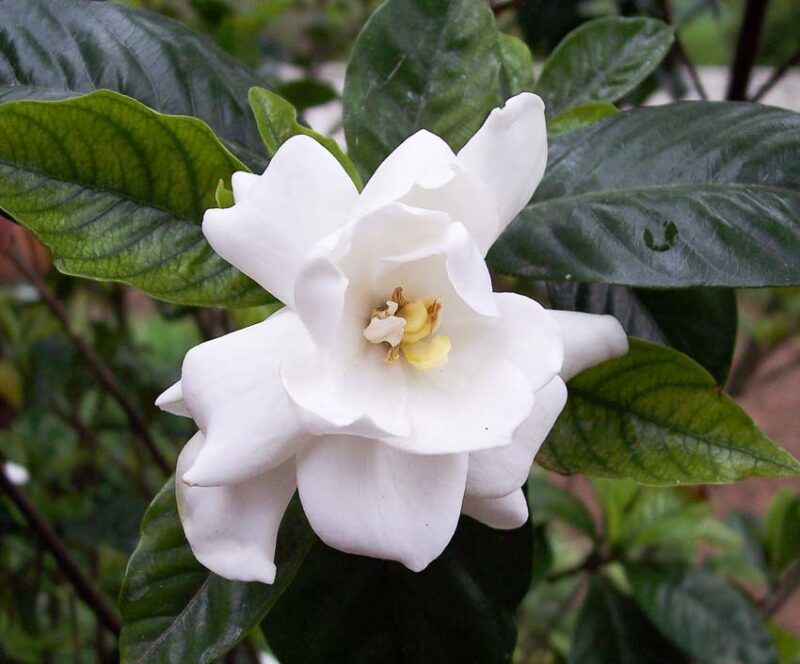
The fragrance of gardenia plants is similar to jasmine, and people often use the scents together in perfumes. The scent of gardenia is often described as “creamy” due to its rich, subtle undertones.
Gardenias (Gardenia jasminoides) are evergreen shrubs with thick, glossy leaves. You can also grow them indoors with at least 6 to 8 hours of direct light in a sunny window, but they are much easier to grow outdoors.
Most gardenias grow in Zones 8 to 11, but thanks to the ingenuity of plant breeders, new cultivars will grow in gardens located in sheltered spots in Zone 6 or 7. Try ‘Summer Snow,’ ‘Swan Princess,’ and ‘Swan Queen’ in areas with temperatures as low as -10°F (-23°C).
Roses: The Scent of Romance
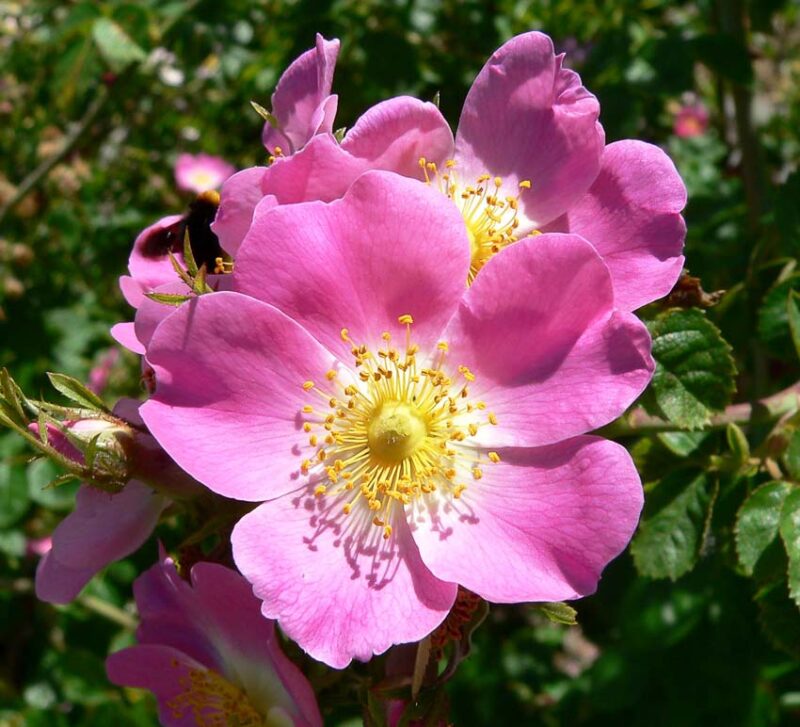
Deeply embedded in our memories, the smell of a rose conjures up associations of poetry and romance. Writers have penned thousands of poems about roses, including Shakespeare’s often-quoted lines from Romeo and Juliet. “That which we call a rose / by any other name would smell as sweet.”
Roses are fragrant plants that have been an iconic symbol of romance for hundreds of years, and their fragrance has been a staple in perfumes for at least that long. A rose garden is sure to brighten the heart of anyone, and there are over 300 species of roses to choose from.

To help you choose, here’s a list of the top ten most fragrant rose cultivars, including old-fashioned and English roses prized for their fragrance:
- ‘Madame Isaac Pereire’
- ‘Honey Perfume’
- ‘Radiant Perfume Glandifora’
- ‘Heritage’
- ‘Louise Odier’
- ‘Madame Plantier’
- ‘Fragrant Cloud’
- ‘Autumn Damask’
- ‘Gertrude Jekyll’
- ‘Madame Alfred Carriere’
Lilacs: A Nostalgic Perfume
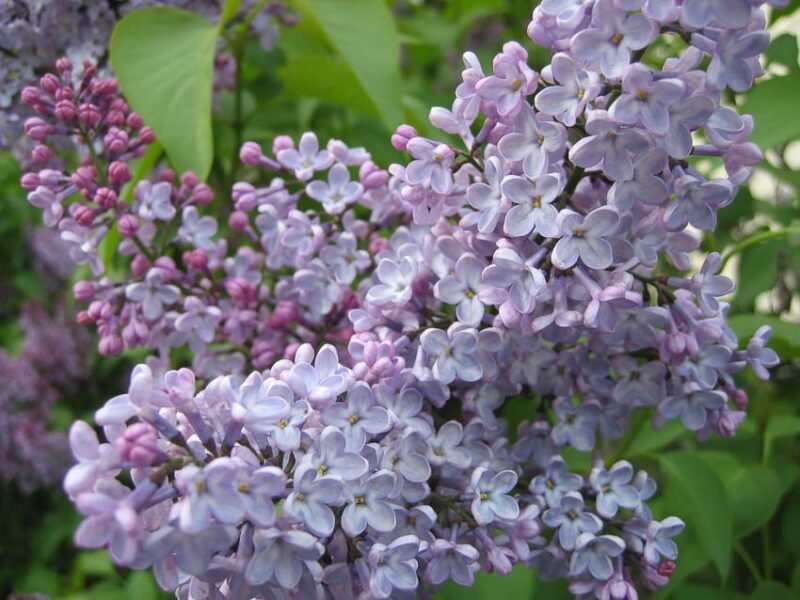
Fragrant plants like lilacs (Syringa vulgaris) will grow for over a century, often one of the last remnants of a pioneer ghost town. This fact only adds to their acclaim as one of the most nostalgic scents in the world. They only bloom for a few weeks in the spring, but it is a glorious time when their scent fills the air.
Lilacs are just as hardy as the pioneers that brought them west, with some species surviving temperatures as low as -60°F (-51°C). Plant these fragrant flowers in your garden in full afternoon sun 3 to 15 feet apart to create a fragrant hedge. Water them deeply once a week, and trim them after blooming to keep the plant compact.
All species of lilacs smell amazing. They come in various colors, from purple to pink and white. One of the most fragrant lilac species is Manchurian lilac (S. pubescens), which is native to Asia and is well known for its lavender to ice blue colors.
Peonies: An Old-Fashioned Favorite
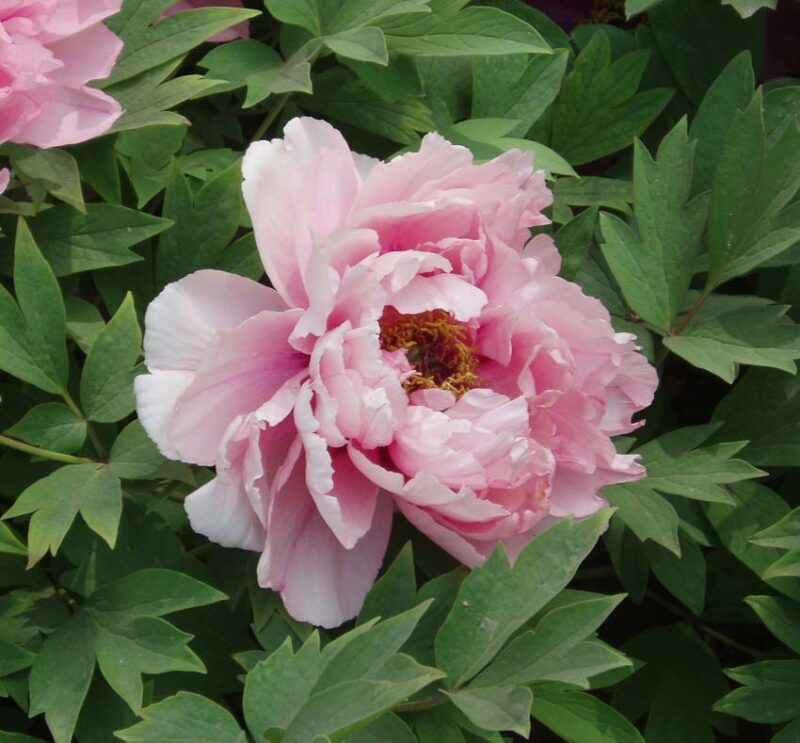
Common peonies (Paeonia lactiflora) are also long-lived fragrant plants and you can find them growing in older gardens across the United States. They are an excellent fragrant plant to grow in colder climates (Zones 3 to 9) because peonies need cold weather exposure to bloom.
There are hundreds of varieties of peonies, classified into three categories: herbaceous, tree, and intersectional. Intersectional peonies are a hybrid cross between herbaceous and tree peonies.
Herbaceous and intersectional peonies die back every year and grow back from the ground. Intersectional peonies, also called Itoh Peonies, bloom for 3 to 4 weeks each year, producing plate-sized blossoms that can be used for cut flowers.
Sweet Alyssum: A Honey-Scented Ground Cover
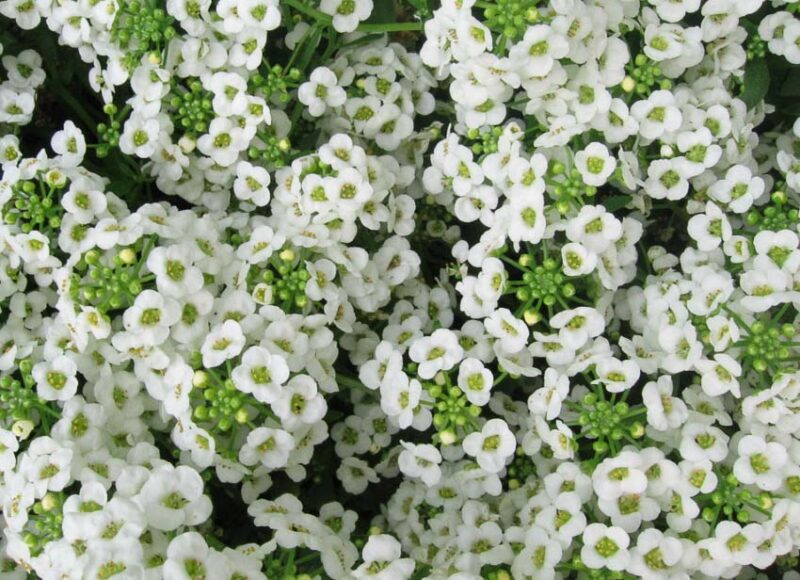
Sweet alyssum (Lobularia maritima) is not a true annual. This fragrant plant is a short-lived perennial in Zones 9-11, but it is commonly grown in gardens as an annual in Zones 5-8. You can start them indoors and plant them after the danger of frost. It can also be sown directly from seed.
Sweet alyssum, which grows to a maximum height of about six inches, is an excellent border plant. It’s also grown as a ground cover and is ideal for containers and flower beds. In its native habitat, sweet alyssum grows in sand dunes, so it does extremely well in rock gardens.
Grow sweet alyssum for early blooms that last through fall. It likes full sun, but it also tolerates partial shade. Several cultivars bloom in white, pink, rose, and purple shades.
Frequently Asked Questions About Fragrant Plants
What are the most fragrant plants for a garden?
The most well-known fragrant plants for a garden include roses, lilacs, lavender, peonies, and gardenia, but thousands of species offer beautiful and heady scents in addition to their bright-colored flowers.
Can fragrant plants survive in the shade?
While most fragrant plants prefer lots of sun, some shade-loving species exist. The best plants for a fragrant shade garden are lily of the valley (Convallaria majalis), sweet woodruff (Galium odoratum), and fragrant hostas (Hosta plantaginea).
What season do fragrant plants usually bloom?
Summer is the best season for fragrant plant blossoms, but many bloom in the spring. Carefully select plant species to ensure that you can enjoy flower scents throughout the growing season. You can also add fragrant herbs, like lavender, which smells good all year.
How do I care for fragrant plants?
Most fragrant plants like full sun and well-drained soils, but every plant has unique soil, water, and sunlight requirements. It’s best to research the plants you select for your garden to determine their needs.
Can fragrant plants be grown in pots?
Container gardens are an excellent way to add fragrant plants to your backyard. Some of the best fragrant plants for containers include annuals like petunias, sweet alyssum, and geraniums. You can also grow herbs like lavender and rosemary in pots.

